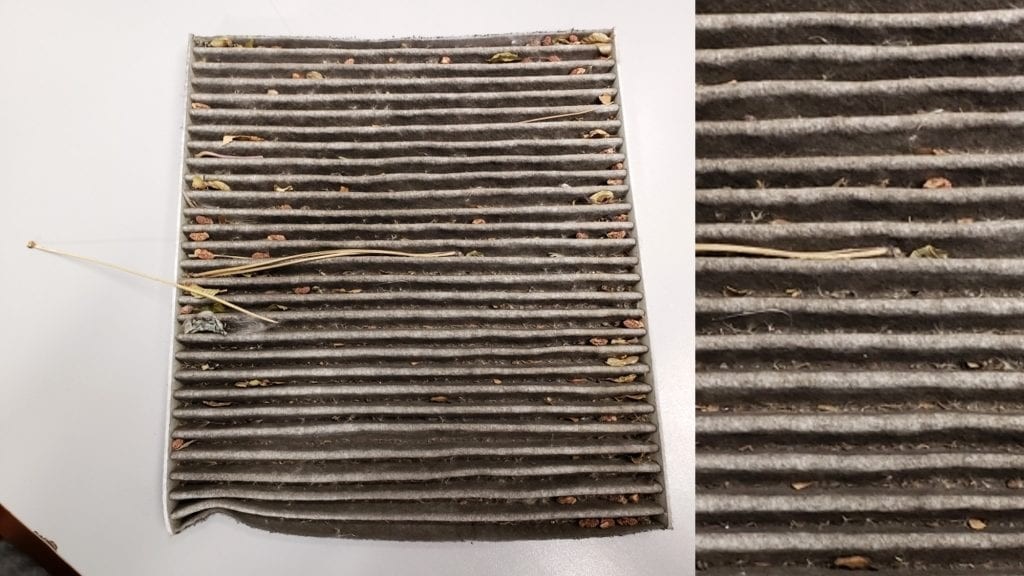There’s nothing quite like escaping the summer heat in your car with the air conditioning blasting. However, that refreshing blast can quickly turn unpleasant if your car AC starts emitting a foul odor. If you’re wondering How To Remove Smell From Ac In Car, you’re not alone. Many drivers experience this issue, and the smells can range from musty and mildewy to something resembling dirty socks or even rotten eggs. These odors aren’t just unpleasant; they can sometimes be accompanied by symptoms like headaches or dizziness. Let’s delve into the reasons behind these unwelcome smells and, more importantly, how to eliminate them for good.
Understanding Why Your Car AC Smells Bad
The root cause of most car AC odors boils down to one thing: moisture. Contrary to popular belief, your car’s air conditioning system doesn’t actually create cold air. Instead, it works by removing heat and humidity from the air entering your vehicle.
The AC system utilizes coils that become very cold to condense moisture out of the air. As warm, humid air passes over these cold coils, condensation forms – much like it does on a cold glass of water on a hot day. This process effectively dehumidifies the air before it’s circulated into your car, resulting in that cool, comfortable feeling.
This condensation is collected and typically drained out of your vehicle through a drain line. However, problems arise when this moisture gets trapped within the system. If the drain line becomes clogged or if moisture doesn’t evaporate properly, it creates a damp environment inside your AC unit.
The Mold Connection
And what thrives in damp, dark environments? Mold. Mold and mildew are the most common culprits behind musty smells emanating from your car’s AC vents. The evaporator core and surrounding components of your AC system become an ideal breeding ground for these microorganisms when trapped moisture is present.
As air passes through the AC system and over the mold and bacteria colonies, it picks up those unpleasant odors and carries them into your car’s cabin through the vents. This is why you often notice the smell most strongly when you first turn on the AC.
Other Potential Causes
While mold is the primary offender, other factors can contribute to bad AC smells:
- Bacteria: Similar to mold, bacteria also flourish in moist environments and can produce foul odors as they grow.
- Debris Buildup: Leaves, dust, pollen, and other debris can accumulate in the AC system over time. This organic matter can decompose, creating unpleasant smells and providing a food source for mold and bacteria.
- Old Air Filters: A clogged or dirty cabin air filter restricts airflow and can trap moisture, exacerbating the problem. It can also become a source of odors itself as it collects dust, pollen, and other contaminants.
Step-by-Step Guide to Remove Car AC Smell
Getting rid of that bad AC smell is usually achievable with some DIY effort, although in persistent cases, professional help might be necessary. Here’s a step-by-step approach to tackle the problem:
Initial Checks and Quick Fixes
-
The Fan-Only Trick: Get into the habit of turning off your AC button a few minutes before you turn off your car, but keep the fan running on high. This simple practice helps to dry out the evaporator core and vents, reducing moisture buildup and hindering mold growth.
-
Replace Your Cabin Air Filter: This is often the easiest and most impactful first step. Locate your cabin air filter (usually behind the glove compartment, but check your car’s manual) and inspect it. If it’s dirty, replace it with a new one. Regular filter changes (as recommended by your car’s manufacturer) are crucial for maintaining good air quality and preventing odors.
Alt text: A heavily soiled car cabin air filter, demonstrating the buildup of dirt and debris that can contribute to car AC odors and reduced air quality.
Deeper Cleaning Methods
If the quick fixes don’t fully eliminate the smell, you’ll need to delve into more thorough cleaning methods:
-
Inspect and Clear the AC Drain Line: The drain line is responsible for channeling condensation out of your car. If it’s clogged with debris, water will back up into the system, creating a perfect breeding ground for mold.
- Locating the Drain Line: The drain line is typically a small rubber hose that exits from the firewall (the wall between the engine compartment and the passenger cabin) underneath your car, usually on the passenger side. You might see water dripping from it when your AC is running normally.
- Clearing the Clog: Carefully try to clear any blockage using a thin, flexible wire or a pipe cleaner. You can also try using compressed air to gently blow out the clog from the drain line opening under the car. Caution: Be gentle to avoid damaging the drain line. If you’re unsure or uncomfortable, it’s best to seek professional assistance.
-
Use an AC Vent Cleaner/Disinfectant Spray: These specialized sprays are designed to kill mold, bacteria, and fungi within your car’s AC system and ventilation ducts.
- Application: Locate the exterior air intake vents for your car’s ventilation system. These are usually located at the base of the windshield, under the hood, or in the cowl area (the area between the windshield and the hood).
- Spray Procedure: Start your car and turn the AC fan to its highest setting, with the air intake set to recirculate (to draw air from inside the car). Spray the AC vent cleaner directly into the exterior air intake vents for the recommended duration specified on the product. This will draw the cleaner into the ventilation system, where it can disinfect and eliminate odor-causing organisms. Ensure you use a product specifically designed for car AC systems and follow the manufacturer’s instructions carefully.
-
Professional AC System Cleaning/Service: If DIY methods fail to resolve the odor, it’s time to consult a professional. A qualified mechanic can perform a more in-depth cleaning of your AC system, including:
- Evaporator Core Cleaning: Professionals have specialized tools and cleaners to directly access and clean the evaporator core, which is often the primary source of mold and odors.
- Drain Line Inspection and Cleaning: They can thoroughly inspect and clear any stubborn blockages in the drain line.
- System Disinfection: Professional services often include a comprehensive disinfection of the entire AC system to eliminate mold, bacteria, and other contaminants.
- Refrigerant Check: While not directly related to odors, a professional service can also check your refrigerant levels and system performance to ensure optimal AC operation.
Preventing Future AC Odors
Once you’ve successfully removed the bad smell, prevention is key to keeping it from returning. Here are some proactive measures:
-
Regular Cabin Air Filter Changes: Stick to the manufacturer’s recommended schedule for replacing your cabin air filter. More frequent changes might be beneficial if you drive in dusty or pollen-heavy environments.
-
Consistent Use of the Fan-Only Trick: Make the habit of running the fan without the AC for a few minutes before turning off your car a standard practice.
-
Avoid Recirculation Mode Constantly: While recirculation mode can cool the car faster, prolonged use can trap moisture inside. Periodically switch to fresh air mode to allow for better ventilation and moisture removal.
-
Consider Antimicrobial Solutions: For vehicles prone to AC odors or for those living in humid climates, consider using cabin air filters treated with antimicrobial agents. These filters can inhibit the growth of mold and bacteria within the system. Some car manufacturers are also incorporating antimicrobial technology into AC system components.
Alt text: Antimicrobial-treated foam component used in car AC systems, designed to resist mold growth and prevent musty odors from developing.
Alt text: Untreated foam from a car AC system exhibiting visible mold growth, highlighting the potential for odor problems in untreated components.
Conclusion
Dealing with a smelly car AC can be frustrating, but understanding the causes and taking the right steps can effectively resolve the issue. By focusing on moisture control, regular maintenance, and proactive cleaning, you can banish those unpleasant odors and enjoy fresh, clean air every time you turn on your car’s AC. If the problem persists despite your best efforts, don’t hesitate to seek professional help to ensure your AC system is thoroughly cleaned and functioning optimally.


